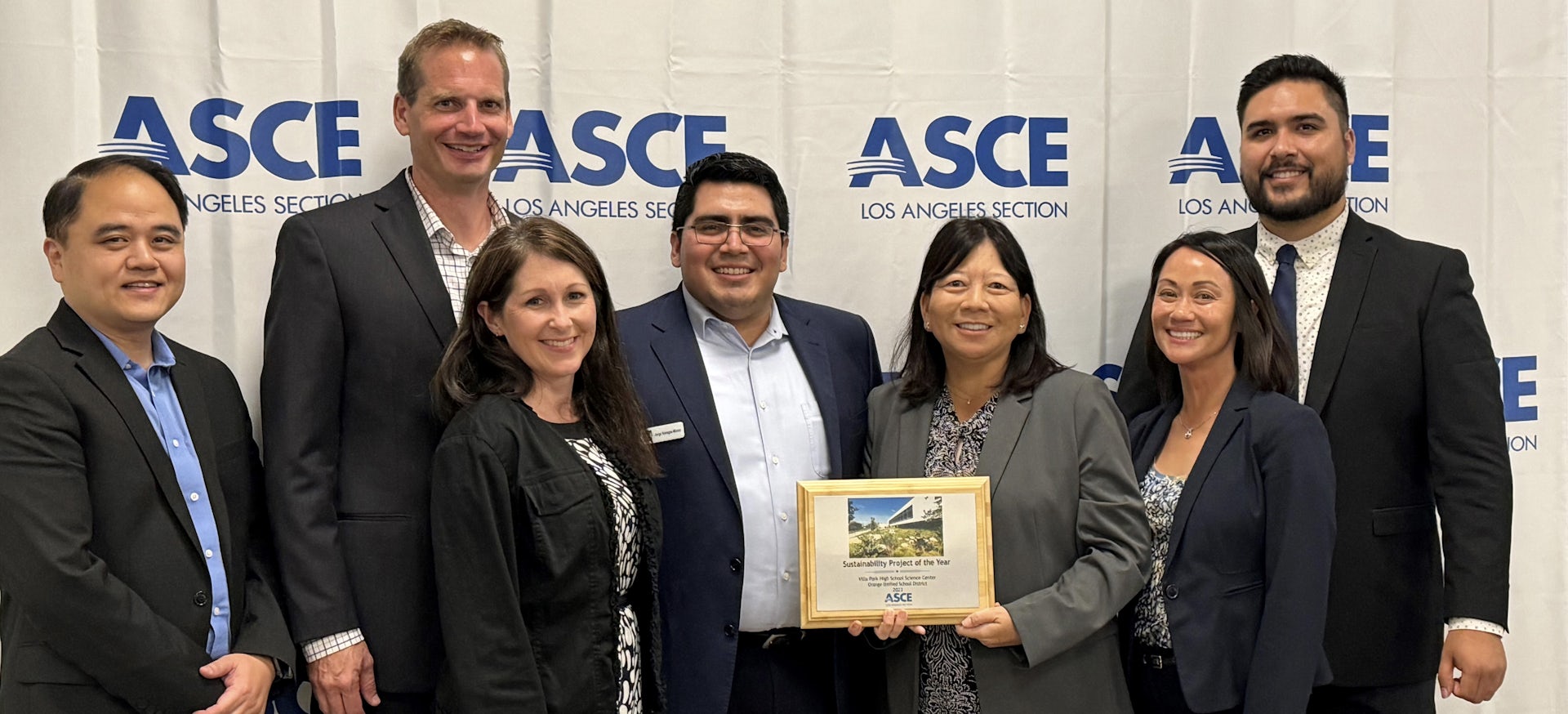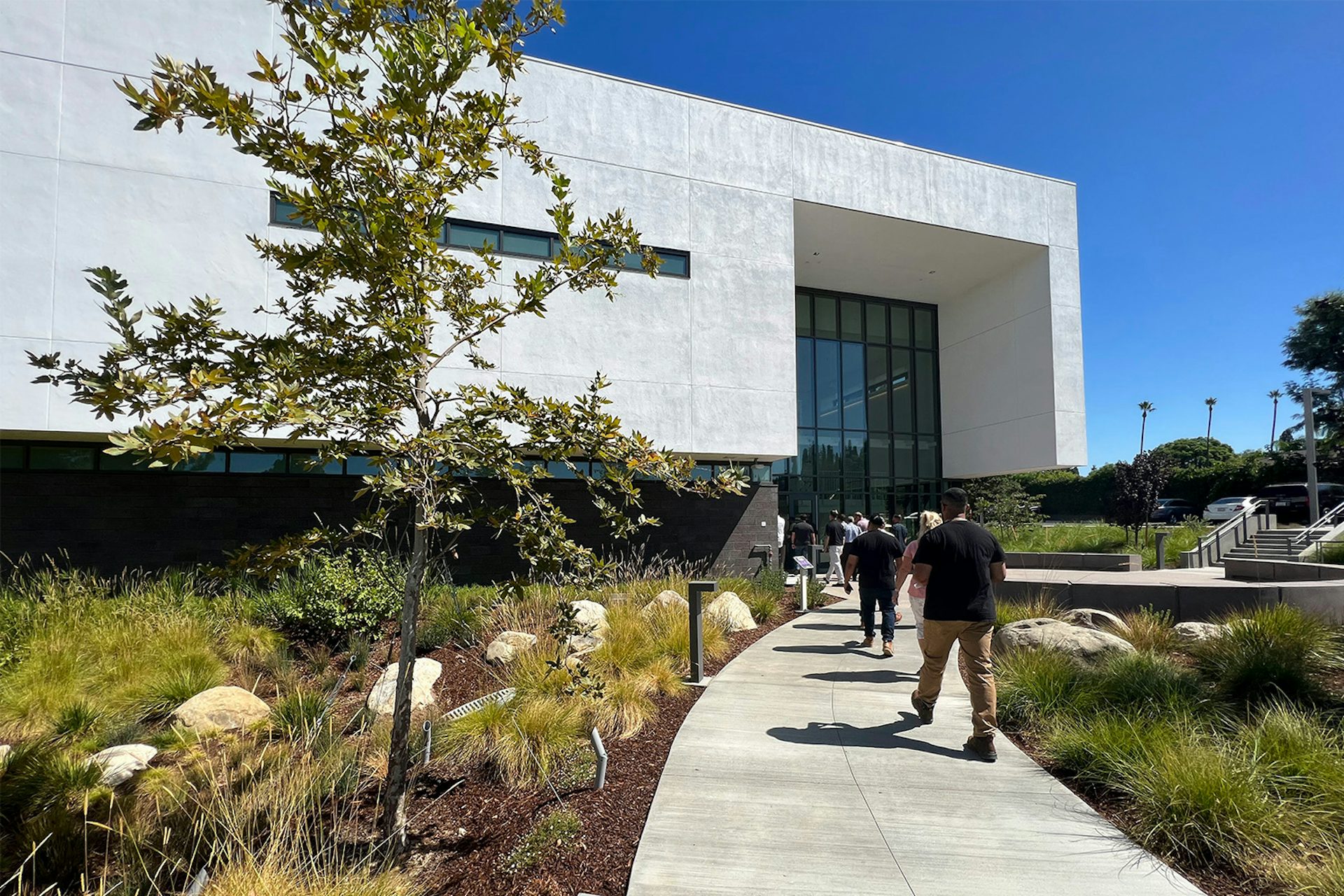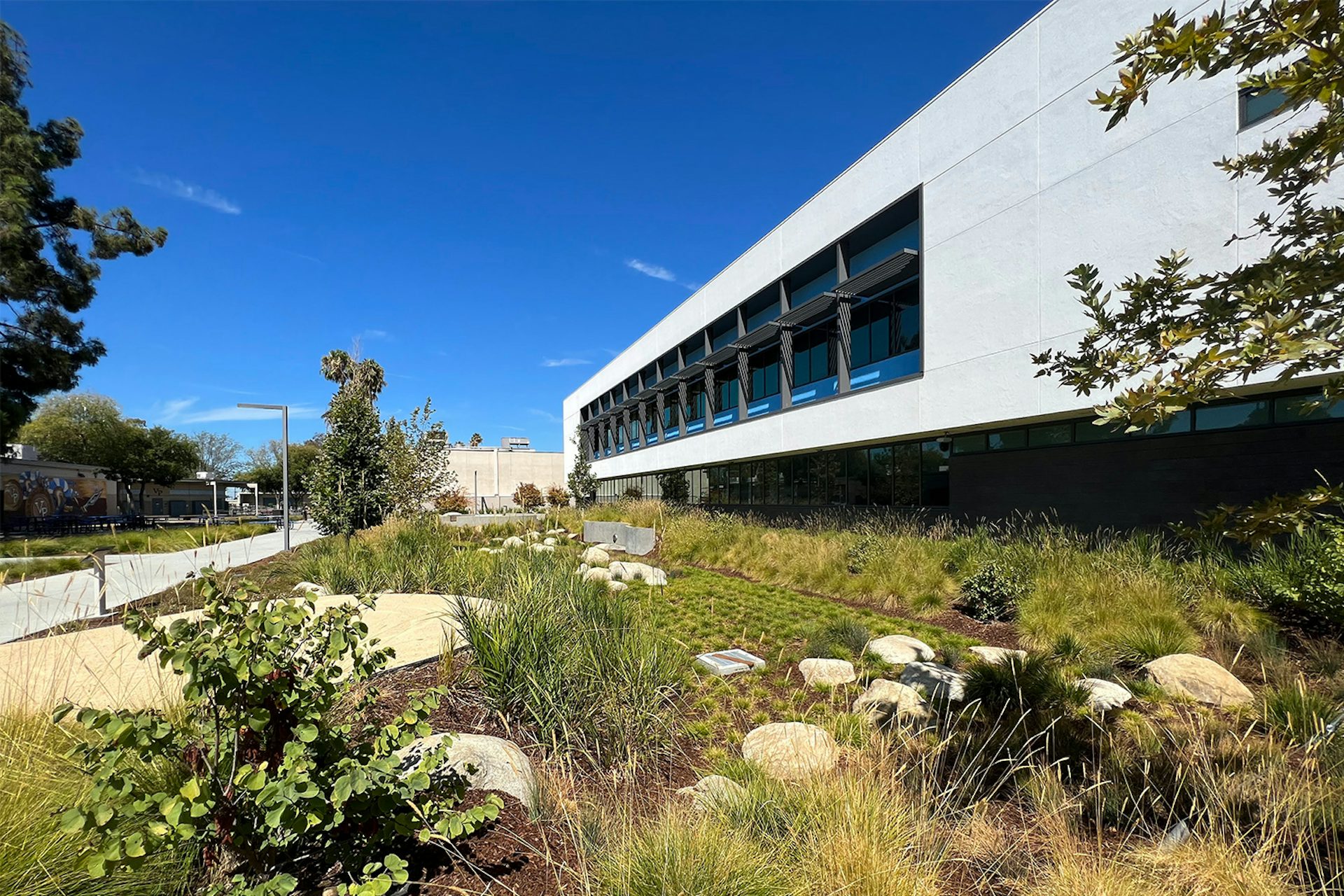Design for Orange County high school praised for ‘technical achievement’ in addressing stormwater and ecological stewardship.
LPA civil engineers were recently recognized by the American Society of Civil Engineers, Los Angeles Section (ASCE LA) with the Sustainability Project of the Year award for the Villa Park High School Science Center.
The civil and landscape design for the Villa Park High School Science Center restores the natural environment on the site, which formerly housed a one-story classroom building. The design addresses downstream flooding on-site and adjacent city-owned properties by the City of Villa Park.
Designers used Low Impact Development (LID) strategies to mimic the site’s predevelopment conditions, minimizing disturbed areas and impervious cover, and infiltrating, storing, detaining and treating storm water runoff on site. Large bioretention planter areas adjacent to the new building and parking lot treat stormwater and attenuate post-construction flow rates using natural processes.
The Villa Park High School Center is a great example of LPA designers working together in an integrated team to solve problems. We were able to restore the site and create a natural and creative design for handling stormwater for the campus.
The Awards committee members praised the project’s “unique technical achievements, its complexity, scope and engineering features.”
In addition to civil engineering, the site solutions were influenced by a multidisciplinary team of LPA designers, including landscape architecture, structural engineering, mechanical engineering and construction administration.
“The Villa Park High School Center is a great example of LPA designers working together in an integrated team to solve problems,” says Principal and LPA Director of Civil Engineering Kathereen Shinkai, PE, F.ASCE. “We were able to restore the site and create a natural and creative design for handling stormwater for the campus.”
The design emphasizes ecological stewardship throughout the site. The stormwater system serves as an educational tool, with signage drawing attention to the importance of preserving and restoring waterways. Seating near the bioretention basin creates environments for outdoor learning. Drought-resistant, native Southern California plantings address water security while exposing students to natural processes and contributing to their mental well-being.
The project previously was recognized by the ASCE Orange County Branch with the Outstanding Sustainable Project of the Year award. The science center building was also honored with an award from the Masonry Association of California and Nevada.
















